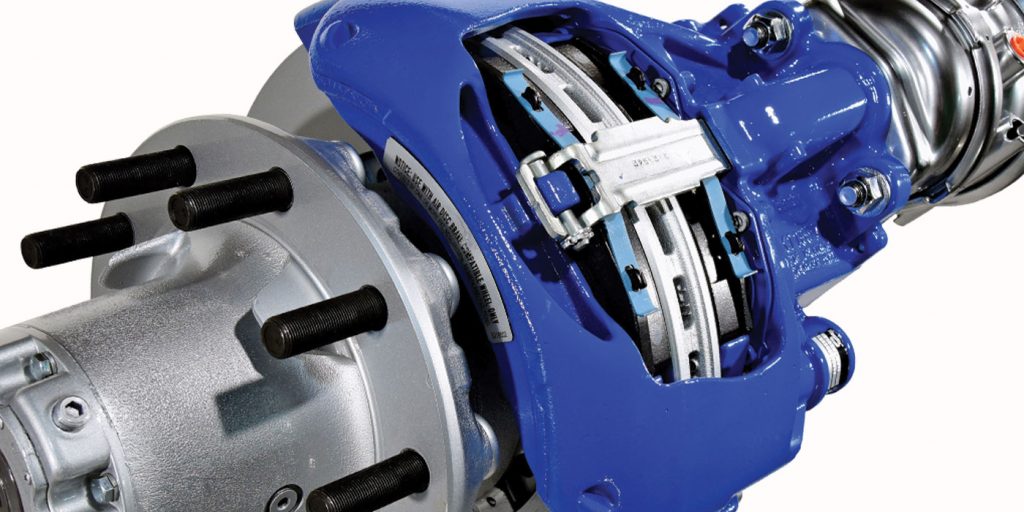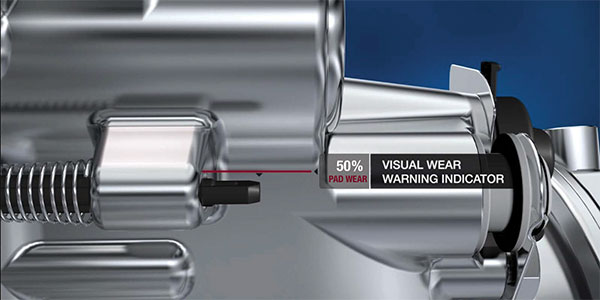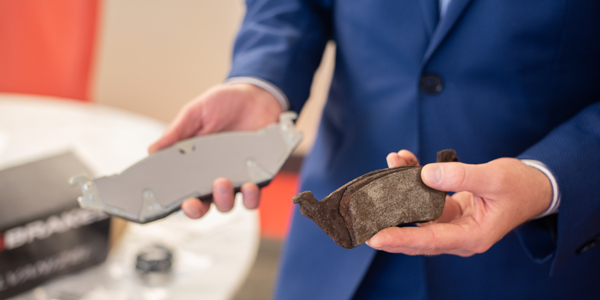A vehicle cuts in front of your truck and stops abruptly. The truck driver slams on the brakes only to find that the truck’s stopping distance isn’t what it once was—these brakes haven’t been inspected recently. Without the proper stopping distance, an accident becomes inevitable.
It’s an extreme example to be sure, but it’s just one of many reasons why you don’t want to let your brake wear go unchecked. Trucks rely on an effective braking system to run their routes without becoming a danger to those around them. This is not something you want to neglect.
Luckily, implementing an effective process for keeping track of brake wear is no difficult task—so long as you keep up with it.
As with most things braking, the method you use for tracking wear depends on whether your trucks and trailers use drum brakes or air disc brakes (ADBs).
Read more about drum brakes vs. disc brakes here.
“The minimum allowable brake lining thickness on drum brakes is .25 inches. All OEM brake linings have a marking on the edge of the block at or slightly above the .25 thickness, typically called a wear indicator,” says Greg Dvorchak, engineering supervisor of application engineering for wheel ends and braking systems with Hendrickson Trailer Commercial Vehicle Systems. “Using the visual indicator when inspecting the brakes can help determine how much of the lining is remaining above the wear indicator mark. It is recommended that fleets track each brake’s wear and compare the results from inspection to inspection to make a rough estimate of the brake’s remaining life for the specific application.”
The consensus among experts, though, is that the wear levels of air disc brakes are more challenging to track since the pads are more difficult to see.
“Using the visual indicator when inspecting the brakes can help determine how much of the lining is remaining above the wear indicator mark.”
– Greg Dvorchak, Hendrickson
“Many air disc brake OEMs have what is called a visual wear indicator integrated into the caliper-carrier assembly,” Dvorchak points out. “It is a notch, stand-out or pin and its movement is compared to a fixed part on the carrier. This indicator measures total system wear for both pads and rotor thickness. All brakes are different, and each manufacturer’s technical manual should be referenced for proper use of the visual wear indicator.”
“With air disc brakes, technicians can use a borescope or mirrors to see the visual indicators on the caliper/carrier, and/or use a pad wear gauge to measure friction and rotor thicknesses,” suggests Keith McComsey, director of marketing and customer solutions (wheel-end) with Bendix Spicer Foundation Brake.
It may be more difficult to see the wear level on ADBs, but according to Tony Ryan, technical services and training manager for SAF-Holland, the key is to keep to a strict inspection schedule to track your remove-and-replace cycles.
“Almost all PM inspections on disc brakes are six months now, with only cursory pad-wear inspections required,” Ryan says. “Plus, there are fewer parts to inspect, maintain and stock with ADBs when compared to drum brakes. This means less inventory for workshops and less downtime for PM servicing of vehicles.”
Use the tools at your disposal

Brake manufacturers across the industry make their own devices to more effectively measure brake wear; here are a few examples.
Bendix: Bendix released pad wear sensing technology for its ADB22X and ADB22X-LT air disc brakes in late 2019. This technology uses sensors to determine when an ADB pad is nearing the end of its service life. The system records a diagnostic trouble code and creates a system message that can be used via telematics to signal the fleet that it’s time to proactively schedule pad replacement maintenance.
“Once installed, the technology helps lower maintenance costs for fleets in two ways: First, by reducing how often technicians need to inspect air disc brake pads for wear; and second, by giving fleets advance notice of the need for pad replacement, which lets them optimize maintenance scheduling,” McComsey says.
“There is one more benefit: Since the technology provides fleets or technicians that early alert when pads are approaching the point of replacement, this technology may also protect costly ADB components—such as rotors—from damage caused by brake pads that are used past their useful life.”
Hendrickson: Hendrickson recently launched an air disc brake wear indicator tool that technicians can use to measure component wear, allowing them to check brake pad and rotor thickness without removing the wheel or the brake pads from the caliper.
“Regularly inspecting the thickness of brake pads and rotors is important for maximizing the performance and life of any air disc brake system,” Dvorchak says. “The wear indicator tool is designed to make this crucial maintenance practice more convenient.”

Meritor: Jay Urban, senior product manager for air disc brakes with Meritor, touts the level of lining wear observation available on the company’s EX+ L and EX+ H air disc brake platforms.
“The Meritor Visual Wear Indicator takes the idea that brake lining wear can be observed, enhances the visibility of the indicator and provides some potential for prediction by using the graduated rings on the indicator,” he says.

NRS Brakes: NRS Brakes recommends using galvanized steel brake pads to better predict wear.
“With today’s advanced friction materials, everyone should be able to get at least 70,000 miles before thinking of brake pad replacement,” says Montu Khokhar, chief executive officer. “However, no one is achieving that because the steel backing plate rusts and falls apart, compromising its bond to the friction material. Simply speaking, most brake pads fall apart well before the friction material has a chance to wear out. With galvanized steel brake pads, fleets can predict brake pad friction wear, and reduce the need for brake inspections or changes.”
SAF-Holland: SAF-Holland offers an air disc brake pad wear indicator tool to measure outer pad wear without removal of the wheel or the brake pad from the caliper.
“The brake pad wear indicator tool makes for a quick and easy check of the brake pads during the pre-trip walk around, and during regular maintenance intervals,” SAF-Holland’s Ryan says.














